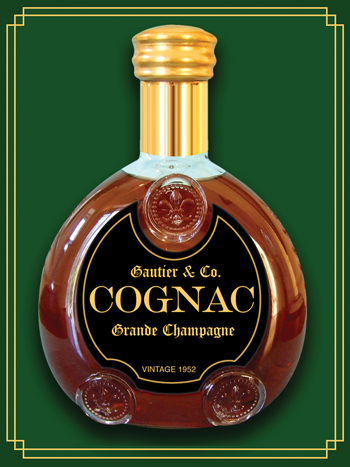GENERAL BUSINESS
Advertising
Making an 'old' product new again
Whatever your business is, you probably have at least one product or service that's been around for a long time. It's still good but people aren't excited about it anymore.
Talk about old. Cognac (cone-yak) has been around since the 16th and 17th centuries. It may be the world's best-known and most highly regarded brandy, but it has not been generating a lot of interest among the current generation of drink mixers.
Slick marketing campaigns by Cognac's big players have helped. Fortune Brands sells Cognac as Courvoisier. Louis Vuitton sells it as Hennessy.
The marketing has given the product new recognition and acceptance as a classy after-dinner drink for everyone from brandy connoisseurs to the hip-hop set. Sales have been increasing for six consecutive years.
The industry's current goal is to develop a Cognac cocktail that will be easy to mix and a favorite among people of all ages. The last popular Cognac drink, the sidecar, came out in the 1920s
Goals in this business, as well as in others, can be difficult to achieve. In January 2008, the Bureau National Interprofessional de Cognac held a four-day workshop in London. They hosted 17 top mixologists who worked to develop a new cocktail, the Summit.
The bureau says building success takes time. They hope to have a drink that will be ordered in the movies and on television. When Sex and the City characters ordered a Cosmopolitan cocktail, The Wall Street Journal analysts say sales of the drink, and along with it, vodka, soared.

How Target did it
Finding your niche in a competitive field
Speaking of competition, how's this for tough? When Dayton Hudson opened its first Target store in 1962, Wal-Mart and Kmart opened their first stores the same year.
In his book, New and Improved: The Story of Mass Marketing in America, Harvard business professor Richard Tedlow says that by tweaking the discount pattern, Target found a niche in a previously nicheless world.
Here's what it does. It markets itself to upper middle class as a source affordable designer products. It stands out against the low-price strategy of its competitors. At the same time, it courts consumers at every economic level as a big-box retailer that sells commodities like bleach and cereal.
The editors of Fortune say Target's business slogan (Expect more, pay less) is somewhat contradictory, but apparently it works. In 2003, Target passed Wal-Mart in same-store sales growth.
Target CEO Robert Ulrich strolled the aisles of his Minneapolis store twice a month. Dressed in Target's standard red shirt and Khakis, his employees didn't recognize him because he made few public appearances. (Ulrich retires in May 2008 to be replaced by Target president Gregg Steinhafel, who also makes few public appearances.)
Though marketing executives are notorious job-hoppers, not one of Target's has left in the last 16 years. They say energy flows and work is fun.
Symbols have played a part in the organization's growth. A surprising 97 percent of Americans recognize Target's target. That is partly because of $1.2 billion spent on advertising in 2007.
Target's beloved bull terrier is an advertising plus. The company is very particular about his image. The dog must be a bull terrier and the circles around his eye have to be red.
Since 1962, the company has seen the U.S. economy fluctuate from great to not so-good. In the last quarter of 2007, stock prices were down and Wal-Mart bested Target's same-store figures, but Target is bullish about the future.
Book Review
Why we make foolish and irrational decisions
You're already thinking the author of Predictably Irrational is not talking about a smart, practical person like you. But he is.
MIT professor Dan Ariely has been studying behavioral economics for 20 years. He contends that irrational behavior is a part of human nature. Don't be put off by his academic standing. His new book is an entertaining read.
It's a fascinating romp through the science of decision-making. Ariely shows how emotions, social norms, relativity and expectations lead us astray.
He illustrates how people keep their options open, even when one is obviously better; why a woman can't decide on one of two suitors though one has demonstrated that he is better.
Want to know why a penny difference in price can prompt you to choose a different candy than the one you really want? Why coffee in a nice setting tastes better? Why a person looks more attractive when a less-attractive person enters the room? Or why people who would never steal money take office supplies?
Ariely says our understanding of economics is now based on the assumption that people behave rationally. It should be based on the natural irrationality of human beings. But once understood, irrationality can be overcome.
Some of his experiments had surprising outcomes. In one, people were asked to write down the last two digits of their Social Security numbers. After they did, it was found that people with numbers ending in the highest digits (80-99) were willing to pay more for items like wine and chocolates than those with the lowest numbers, those ending in 01 to 20.
Economists are using the new-found knowledge to design fixes for problems ranging from drug addition, to undersaving for retirement, or to the positioning of cookies and fruits in the cafeteria.
© 2015 TLC Magazine Online, Inc. |